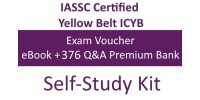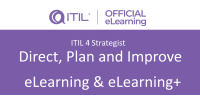Sustainability is a growing concern fro communities, teams and individuals globally and has environmental, social and economic impact. This paper explores the importance of interconnectedness of social groups, economic relationships and the environment and the need to act responsibly. It also discusses how the ITIL 4: Sustainability in Digital and IT module, which has been created by Axelos in close cooperation with DEFRA, can help organizations integrate sustainable practices and ideas into their business and operating models.
Introduction
A search engine will return billions of results in less than a second to anyone searching for ‘sustainability’. Sustainability is discussed every day: at work, in the news, and at home. But what does it actually mean for communities, teams, and individuals globally?
The most simple and practical way to explain sustainability is this: being sustainable means being able to last for a long time and succeed in one’s mission. At the global level, sustainable development is about ‘meeting the needs of the present without compromising the ability of the future generations to meet their own needs.’ At the organizational level, sustainability is about being able to both achieve business objectives and serve the community and future generations.
1.1 The triple bottom line
Many people still only associate sustainability with environmental issues. However, sustainable businesses consider all three pillars of sustainability; this approach is known as the triple bottom line. The three pillars are:
- environmental impact on the natural environment, such as energy consumption, greenhouse gas emission, deforestation, pollution, and so on
- social impact on the social environment, such as job and development opportunities, discrimination, fair work conditions, education, and so on
- economic including investments in mid- and long-term improvements, the ability to withstand unexpected changes and crises, long-term financial reliability, and so on.
Modern sustainability
2.1 Interconnectedness
In the modern, interconnected world, it is impossible to be sustainable in isolation. Sustainability is about contributing to the sustainable development of the systems we live and operate in, including social groups, economic relationships, and natural environments. To achieve sustainability, everyone must act responsibly towards others in these systems.
Corporate social responsibility is one common expression of this concept, but responsibility should be taken at all levels (individual, corporate, national, and international) and in all aspects of sustainability (economic, social, environmental, and governance).
2.2 Digitalization
Digital transformation affects individuals, organizations, societies, and countries. Technologies such as cloud computing, machine learning, big data, and blockchain reshape the way organizations operate, offering new business models. This means that it is impossible to navigate sustainability and digital transformations separately.
Digitalization can enable sustainability, if the technology is used responsibly. To ensure the effective integration of the two transformations, organizations need to:
- understand the key concepts of sustainability and digital technology
- continually explore the recent trends and solutions in both domains
- continually monitor current and anticipated standards and regulations
- adopt and promote sustainability values
- adopt and apply relevant guiding principles to address sustainability and digital transformations
- effectively manage organizational changes
- treat sustainability and digitalization as continual journey, not a one-off initiative
- effectively navigate the complex business, social, and natural environments.
ITIL® 4: Sustainability in Digital and IT 4 Conclusion
ITIL® 4: Sustainability in Digital and IT is an ITIL® 4 specialist module. It provides step-by-step recommendations for sustainable operations and strategy, and explains why and how IT and IT-enabled service providers can become sustainable so they can evolve and succeed in the long term.
The ideas and recommendations in this book are designed for organizations that provide and use digital and IT services and care about what they do, regardless of whether the provider is a self-employed consultant, an IT department within a corporation, or a large digital enterprise.
3.1 What is included?
ITIL® 4: Sustainability in Digital and IT follows the steps of the ITIL continual improvement model. This is because sustainability activities should form a continuous journey, rather than being a one-off initiative. For each step, the book explains the key sustainability concepts, describes applicable methods and models, and provides guidance on their application in the context of digital technology.
3.1.1 What is the vision?
In the first step, organizations define their vision for sustainability, ensuring that it is aligned with the overall business vision and supports the widely accepted sustainable development goals, the UN SDGs. Organizations review and reconsider their guiding principles and may amend them using the UN Global Compact principles for sustainability as a guidance.
3.1.2 Where are we now?
The second step provides a good understanding of the organization’s internal and external context. This is achieved by various forms of assessment, including materiality assessment, risk assessments, and stakeholder analysis and mapping. The results of the assessments inform the following steps.
3.1.3 Where do we want to be?
In the third step, organizations define, agree, and communicate their sustainability objectives. The objectives address the material topics identified via the materiality assessment and support the agreed sustainability vision.
3.1.4 How do we get there?
In the fourth step, organizations plan a portfolio of initiatives to achieve the agreed objectives. Together with the third step, this step results in the creation of a sustainability strategy and supporting tactical and operational plans. In many cases, these plans are based on, or enabled by, digital technology.
3.1.5 Take action
The fifth step provides readers with tools and approaches needed to implement their sustainability plans in today’s volatile, complex, uncertain, and ambiguous business environment. Along with recommendations for addressing complexity (based on the Cynefin framework), this chapter explains how various ITIL management practices support the organization’s sustainability journey.
3.1.6 Did we get there?
In the sixth step, organizations review and report their progress and achievements. Together with ITIL-based recommendations for measurements and reporting, this chapter introduces sustainability-driven approaches to corporate reporting, such as the integrated reporting framework.
3.1.7 How do we keep the momentum going?
The seventh step enables the continual nature of the sustainability journey. This is where drivers such as governance, collaboration, and innovation help organizations to maintain the direction and the momentum to achieve the sustainability objectives and get closer to the agreed sustainability.
Conclusion
In the modern world, sustainability and sustainable operations are non-optional. ITIL® 4: Sustainability in Digital and IT has been created by Axelos in close cooperation with DEFRA to help organizations of all types integrate sustainable practices and ideas into their business and operating models.
We believe that sustainability is a major part of success, and this book aims to help organizations to realize their visions and achieve their goals in a sustainable way, enabling success all around the world.
Source: Axelos Blog, © Copyright Axelos








